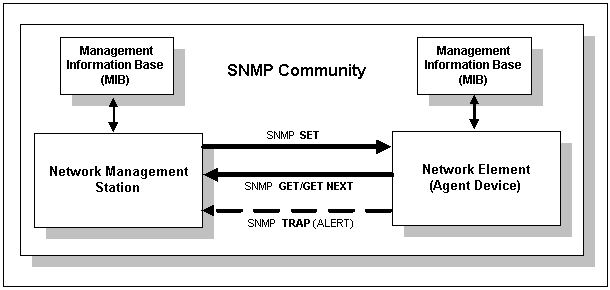|
||
| Products Download Events Support Videos | ||
Technical Support
On-Line Manuals
RL-ARM User's Guide (MDK v4)


 SNMP Agent
SNMP Agent
Simple Network Management Protocol (SNMP) is mainly used in network management systems to monitor network-attached devices for conditions that warrant administrative attention. It is the most popular network management protocol in the TCP/IP protocol suite.
SNMP is a simple request/response protocol that communicates management information between two types of SNMP software entities: SNMP managers and SNMP agents.

In summary, the SNMP Management program performs the following operations:
- The GET operation receives a specific value about a managed object, such as the available hard disk space from the agent's MIB.
- The GET-NEXT operation returns the "next" value by traversing the MIB tree of managed object variables.
- The SET operation changes the value of a managed object's variable. Only variables whose object definition allows read/write access can be changed.
- The TRAP operation sends a message to the Management Station when a change occurs in a managed object, and that change is important enough to send an alert message.
The SNMP Agent validates each request from an SNMP manager before responding to the request, by verifying that the manager belongs to an SNMP community with access privileges to the agent. An SNMP community is a logical relationship between an SNMP agent and one or more SNMP managers. The community has a name, and all members of a community have the same access privileges: either read-only or read-write.
An Embedded SNMP Agent is an optimized and compact implementation for embedded systems. Currently it implements SNMP version 1.
 Note
Note
- In order to use an Embedded SNMP Agent, you must enable and configure it in the configuration file.
ProductsDevelopment Tools |
Hardware & Collateral |
Downloads |
Support |
Contact |
